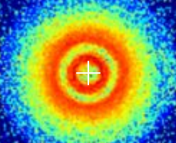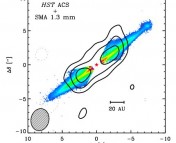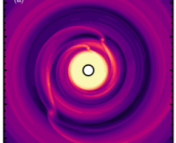Title: Heavy-metal Jupiters by major mergers: metallicity vs. mass for giant planets
Authors: Sivan Ginzburg, Eugene Chiang
First Author’s Institution: Department of Astronomy, University of California, Berkeley
Status: Submitted to MNRAS, preprint on arxiv
Sounding like something straight out of the UK music scene in the late 70’s, complete with long flowing hair, face-melting guitar solos and amps that go all the way to 11, ‘heavy-metal’ Jupiters are the result of a violent formation history for some gas giants.
What’s in a Jupiter?
We know that gas giants are composed almost entirely of hydrogen and helium, with only a small fraction of ‘everything else’ that astronomers like to call ‘heavy metals’. Although it’s impossible to actually peer into the interior of a gas giant to confirm this idea, the picture of a small, dense core with an extended gaseous envelope seems to help fit quite a few puzzle pieces together. A popular formation model for gas giants, called the core accretion scenario, predicts that a proto-Jupiter will not start to accumulate gas until a solid core of roughly 10 Earth masses forms. Furthermore, once the gas accretion process starts, it becomes difficult for additional solids to accumulate. The core accretion idea predicts, most importantly, that all gas giants should have similar-sized cores.
Based on crude measurements of the actual solid to gas makeup of many exo-Jupiters, this universal core mass prediction might not be true. By measuring both the mass and radius of a gas giant and matching that with an evolutionary model, it’s possible to get a rough estimate for the core mass. The basic idea is that at a fixed mass, a planet with a larger radius is, on average, less dense and therefore has less of a core and more of a gaseous envelope. Putting this core size measurement technique to practice, astronomers have found some ‘heavy-metal’ Jupiters with core masses up to 100 times that of the Earth’s mass—a factor of 10 larger than what the core accretion theory predicts.
Obviously, there is something missing from the planet formation models. The key to figuring out exactly what may have to do with the fact that proto-gas giants might evolve in groups, rather than in isolation. This is not a terribly wild assumption to make, given the fact that our own solar system has multiple gas giants. If two of these planets collide and merge, the resulting body is going to have a core that’s twice as large. To work out the consequences of this phenomenon, the authors of today’s paper construct an analytic model to understand how giant planets grow when they are allowed to both accrete gas from their protoplanetary disks and interact and merge with each other. To do so, they take a number of things into consideration, including how quickly a giant will accrete gas, how densely packed proto-giants would be in a typical protoplanetary disk, and how often they might collide with each other.
Pathways for growth
The key idea here is that at any given time during its evolution, the total mass and core mass of a gas giant can take on a wide range of values. The possible relation between these two quantities is shown in figure 1. On one hand, the accretion of gas onto the planet will increase the total mass, without changing the core mass (shown by the horizontal blue line), while a merger between two proto-giants will increase both the core mass and the total mass (red line). The gas accretion is a steady, constant process, while the merger events are sudden and somewhat random. At any given time, a planet might be just about to undergo a merger, or might have just had one happen, which means that the total mass of the planet does not map to a specific core mass. Because merger events are somewhat random, discrete events, a gas giant of a given mass can have a range of different core masses.
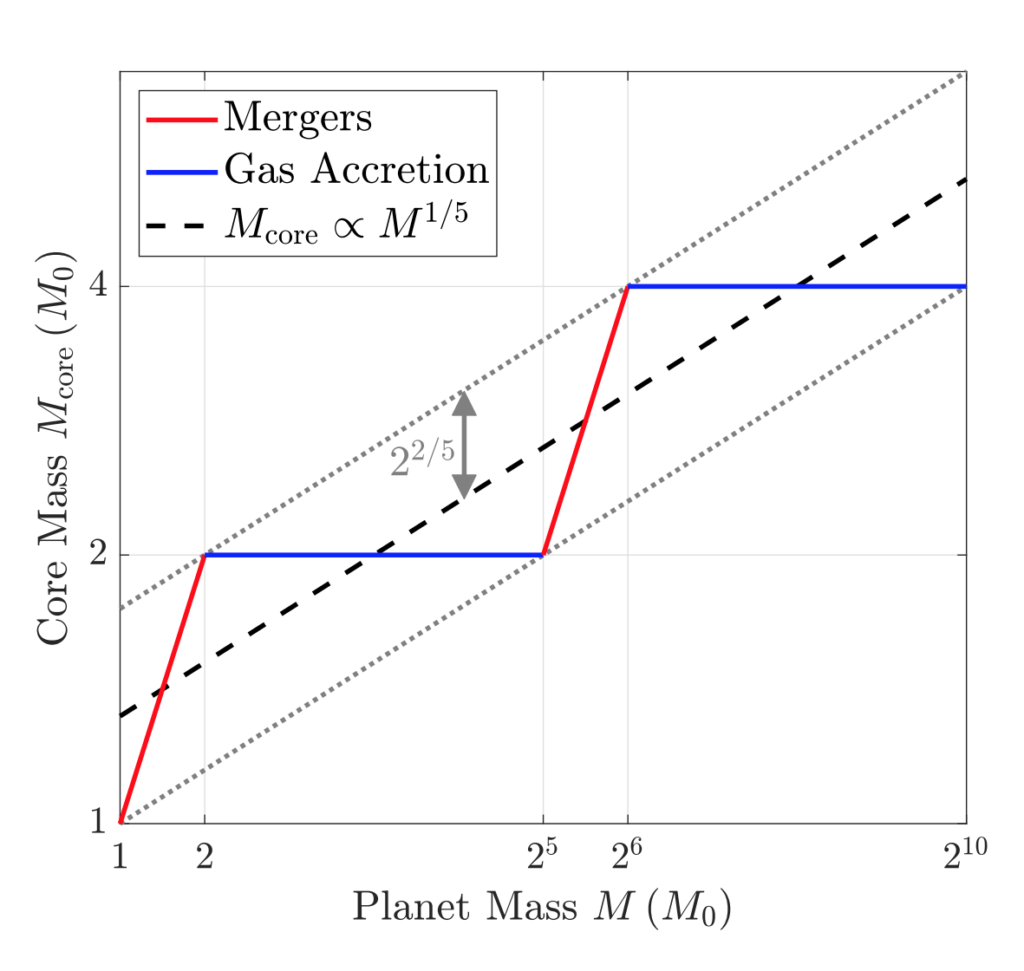
To ultimately test their model, the authors compare the predicted spread in core vs total mass to the actual observed spread between many different planetary systems. This comparison is shown in figure 2, with the core mass instead described (somewhat indirectly) by the metallicity of the planet relative to the host star. The idea here is that differences in how much core vs envelope a giant planet has will alter its measured metallicity (with a bigger gaseous envelope corresponding to a smaller metallicity). Accounting for the variation in metallicity due to both gas accretion and merger events, however, does not appear to fully explain the observed scatter. To remedy this issue, the authors make one additional adjustment to their model, which is to relax the strict requirement that runaway gas accretion begins once a core reaches 10 Earth masses. Instead, the cores are allowed to begin with masses anywhere between 3 and 30 Earth masses.
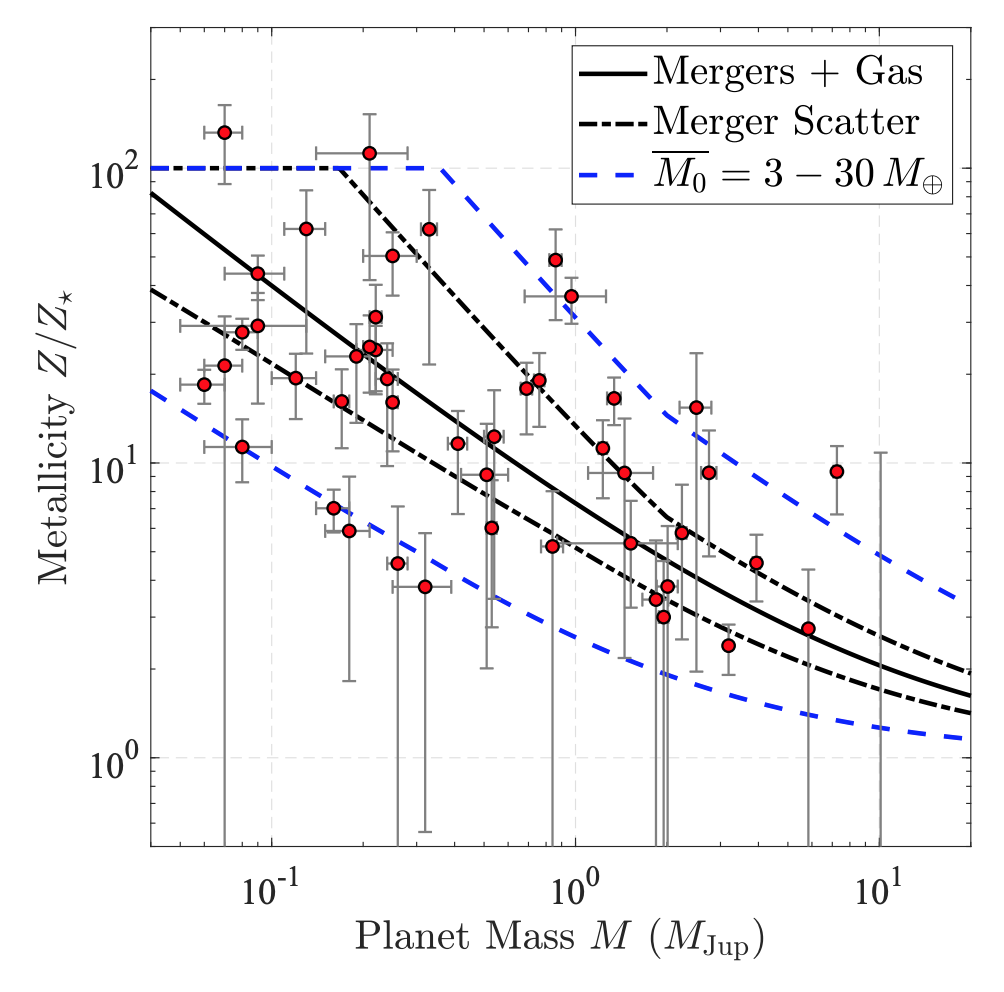
Although this choice was driven by simply trying to make the model match the spread in the data, allowing the initial core mass to be flexible does have a physical basis. The local properties of the protoplanetary disk, including the composition, density and pressure near the proto-giant all control exactly when the planet will begin to eat up the surrounding gas. Not all protoplanetary disks are created equal, with factors such as the type of host star and the surrounding galactic environment also playing an important role. The ultimate takeaway here is that the observed variation in core mass (and the existence of heavy-metal Jupiters) is likely due to both variations in the planet-forming environment and interactions between adjacent gas giants during formation. As it turns out, protoplanetary disks are really just giant mosh pits.

